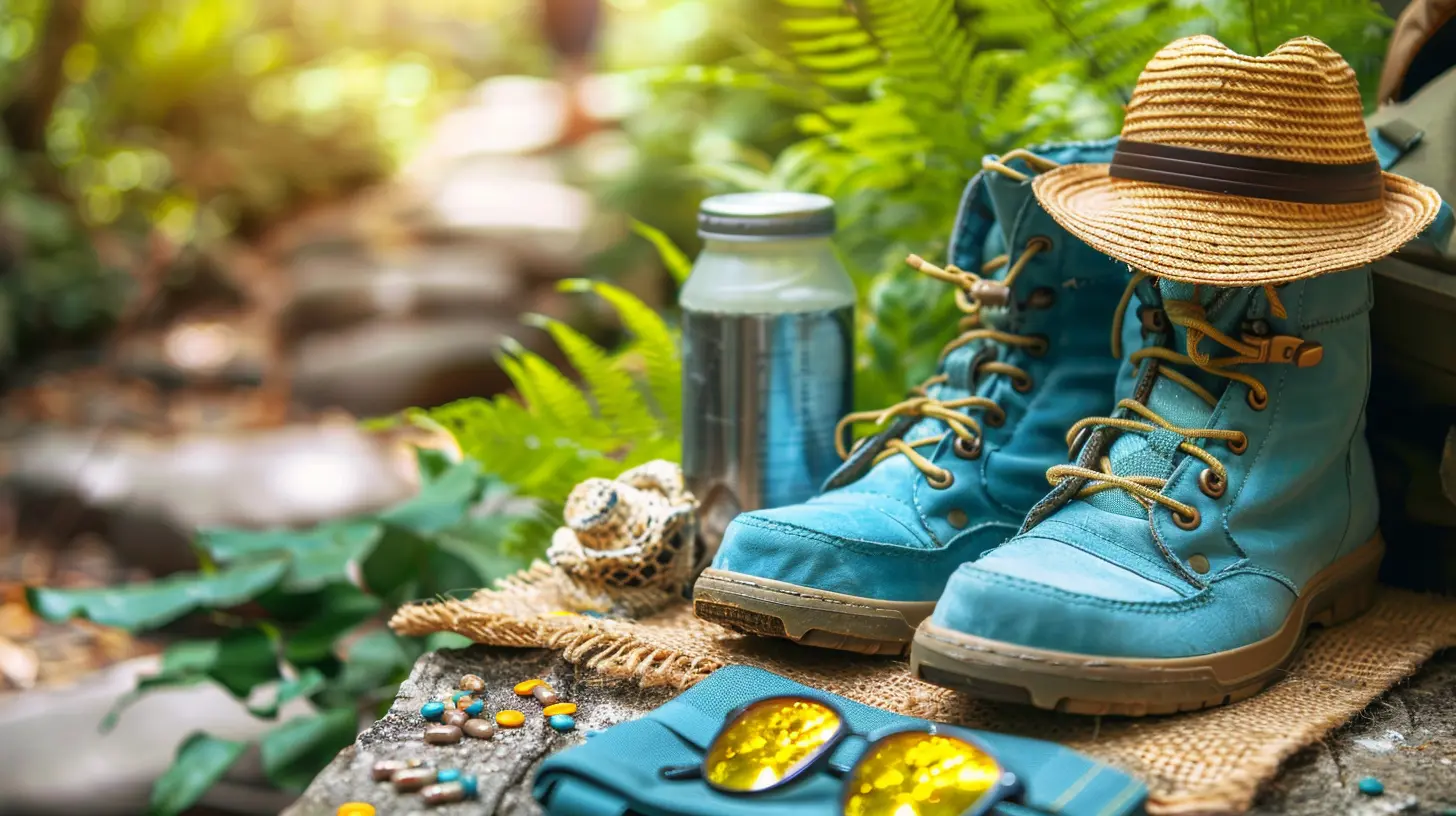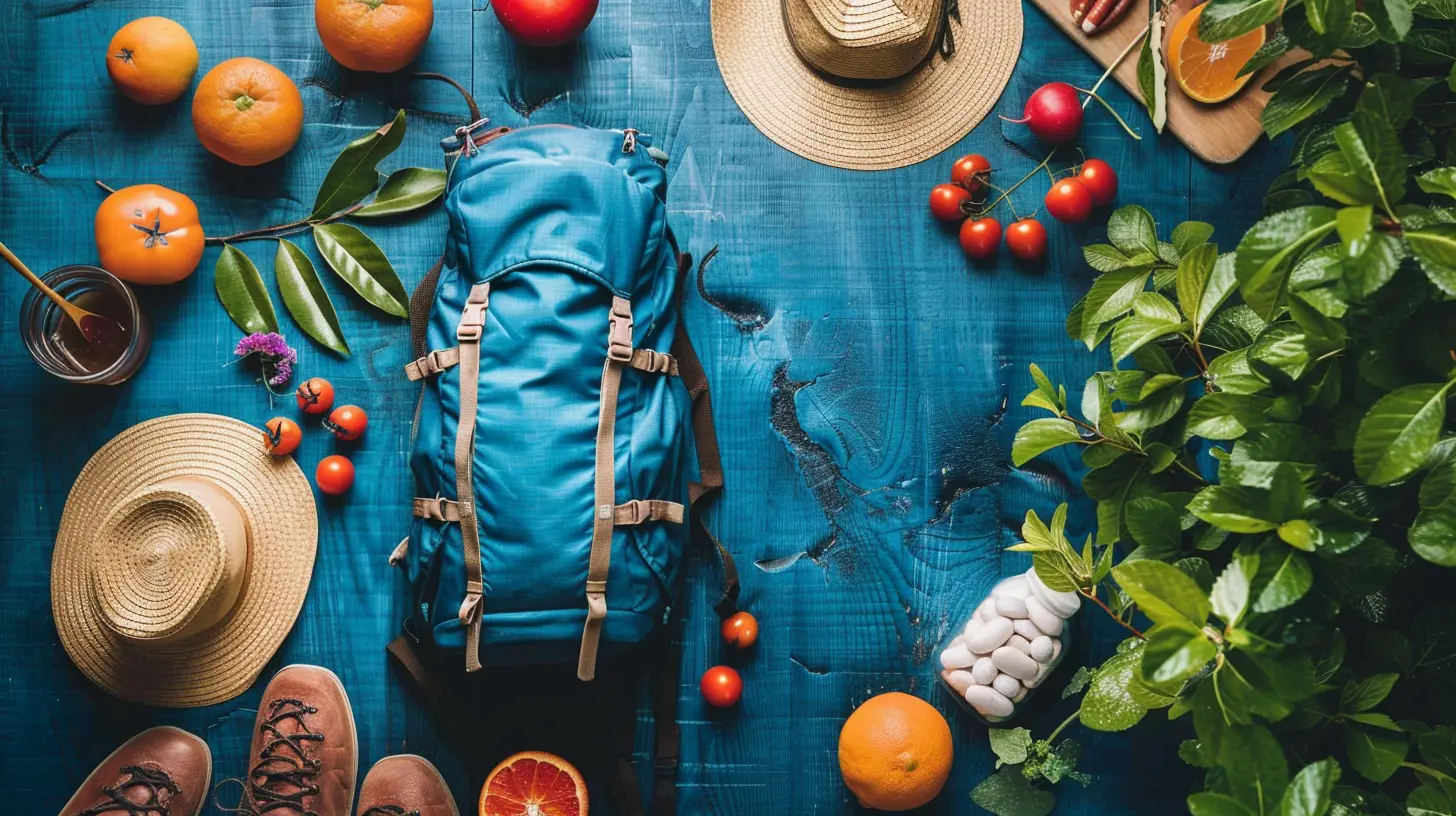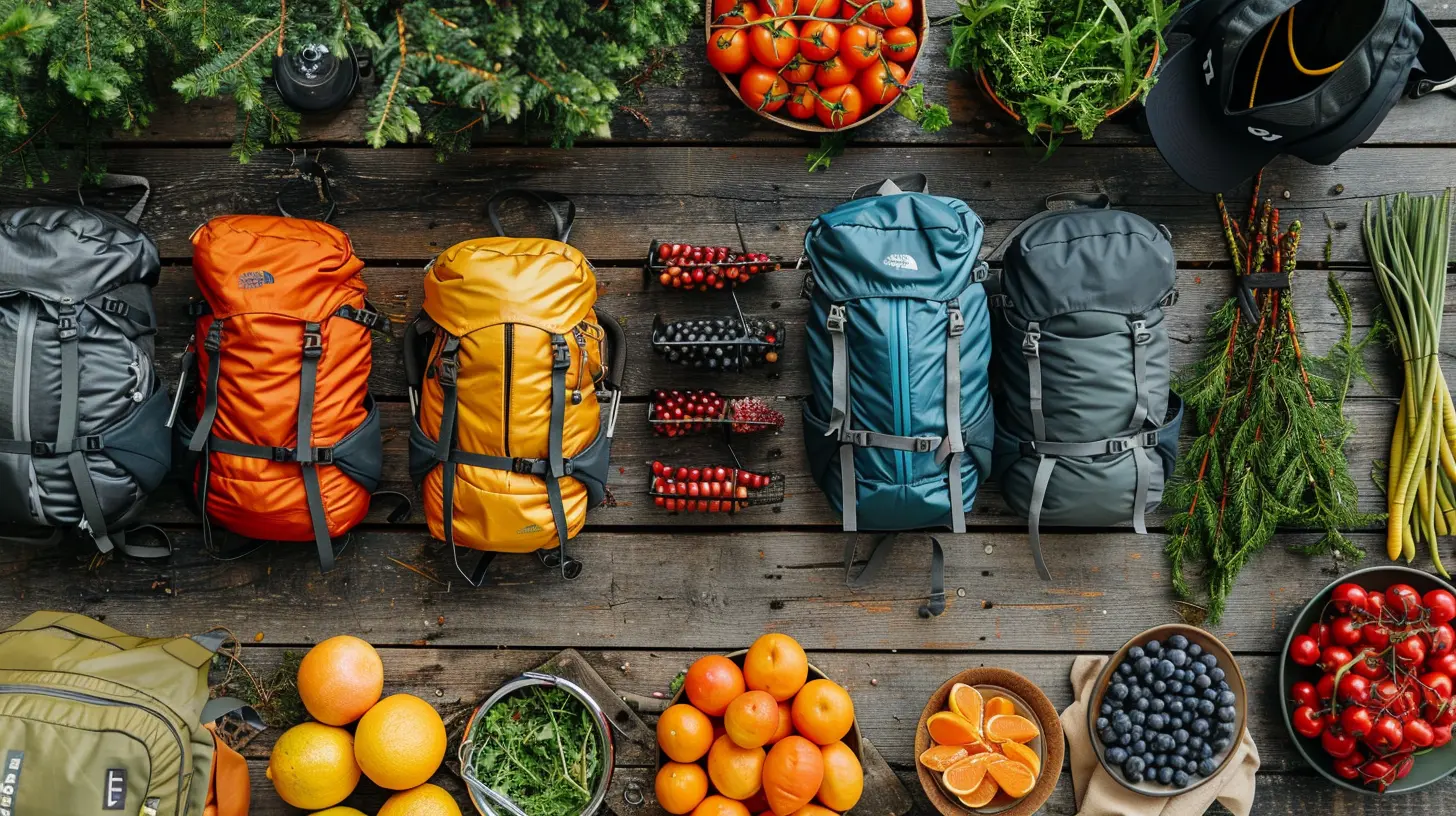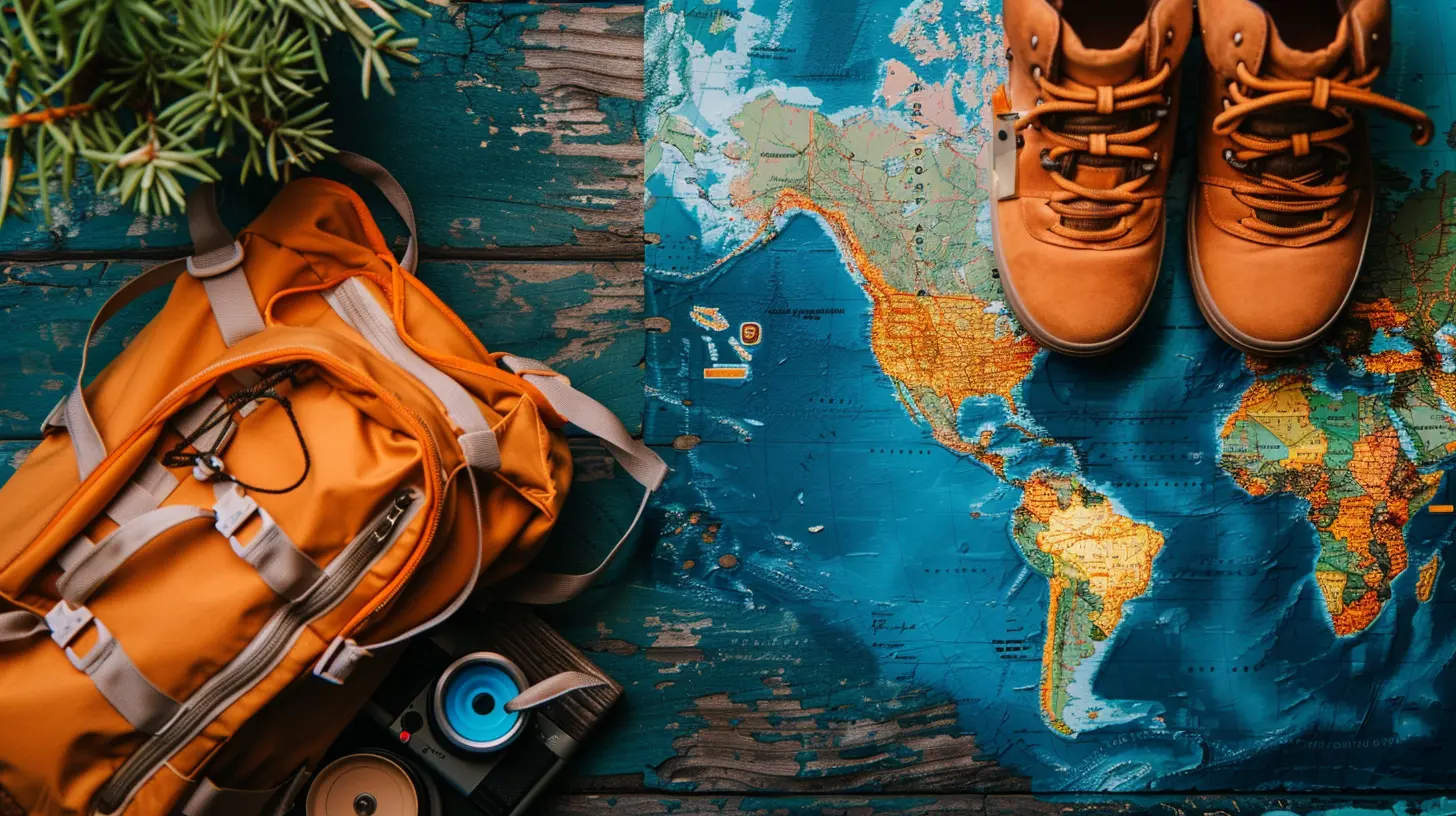Tips for Backpackers: How to Stay Healthy on the Trail
27 August 2025
Backpacking isn’t just a trip—it’s a journey that tests your limits, builds resilience, and gives you stories to last a lifetime. But let's be real—it’s also tough on the body. Long hikes, heavy packs, sketchy food options, and unpredictable weather can do a number on your health if you’re not careful. That’s why staying healthy on the trail isn't just a “nice to have”—it's your survival toolkit.
So whether you’re planning a weekend trek or a weeks-long thru-hike, let’s break down exactly how to keep your body and mind in top shape while living life out of a backpack.
1. Hydration: Your Trailside Lifeline
Ever tried hiking while dehydrated? It’s like walking through molasses with a pounding headache. Water is your #1 trail buddy—treat it like gold.How Much Should You Drink?
Aim for at least 3-4 liters a day, more if you're trekking in hot or dry environments. Don’t wait until you feel thirsty. By then, you're already playing catch-up.Tips to Stay Hydrated:
- Always Carry a Water Filter: Streams and lakes are great water sources, but you need to be smart. A good filter or purification tablets will prevent nasty bugs like Giardia from ruining your hike.- Hydrate Before You Hike: Camel up in the morning—drink a good amount before hitting the trail to lighten your water load.
- Add Electrolytes: Throw in packets with salt, potassium, and magnesium to replace what you sweat out.

2. Eating Right: Trail Fuel, Not Trail Junk
You might think trail food is all granola and jerky, but your body needs more than that. A balanced intake keeps you energized and helps with recovery after long miles.What Should You Eat?
Think calorie-dense and nutrient-rich. Every ounce counts in your pack, so make it count in your stomach too.- Carbs for Energy: Oats, couscous, trail mix, dried fruit.
- Protein for Recovery: Tuna packets, peanut butter, hard cheeses, lentils.
- Fats for Endurance: Nuts, seeds, olive oil packets, dark chocolate.
Trail Food Tips:
- Plan Your Meals: Don’t just wing it. Calculate how many calories you’ll need based on your mileage.- Pre-pack Snacks in Portions: This avoids overeating and keeps your energy levels steady.
- Try New Foods Before the Trip: The trail is not the place to find out chickpeas mess with your stomach.

3. Hygiene and Cleanliness: Don’t Be the Smelly Hiker
Yeah, you’re roughing it, but that’s no excuse for ignoring hygiene. A dirty hiker is a sick hiker.Trail Hygiene Basics:
- Hand Sanitizer Is Gold: Use before eating and after bathroom breaks.- Pack Biodegradable Wipes: Quick clean-ups do wonders for preventing rashes and infections.
- Brush Your Teeth: Sounds basic, but you'd be surprised how many skip this. Gum infections are no joke out there.
Bathroom Habits:
- Follow Leave No Trace: Dig a cat hole 6-8 inches deep, at least 200 feet from water sources.- Carry a Trowel and TP/Ziploc Bag: Yep, you have to pack it out in many areas. Respect the trail and others.

4. Sleep: Your Secret Weapon
Sleep is where all your body’s recovery magic happens. You’re walking hours a day, carrying weight, and battling the elements. Skip sleep, and you’ll feel like a zombie dragging a cement backpack.Sleep Essentials:
- Get a Quality Sleeping Bag and Pad: You don't need a five-star hotel, but you do need insulation and comfort.- Keep a Sleep Routine: Wind down, stretch, eat something light, and reduce blue light. Your body will thank you.
- Protect Against Cold and Wet Conditions: Wet gear is the nightmare of any backpacker. Keep things dry, cozy, and warm.
5. Blister and Injury Prevention: Happy Feet = Happy Hiker
Feet are your most prized asset on the trail. Treat them well, or prepare to suffer.Blister Prevention Tips:
- Invest in Quality Socks: Merino wool is a game-changer. Ditch cotton—it holds moisture and breeds blisters.- Break in Your Boots: Don’t slap on new boots the day of the hike. It’s a recipe for pain.
- Use Foot Powder or Body Glide: Keep things dry and reduce friction.
Deal With Blisters Early:
Feel a hot spot? Stop. Right away. Tape it, pad it, adjust your socks—do whatever it takes. Ignoring it means limping your way through the rest of your trip.6. Mental Health on the Trail: Don’t Ignore It
Backpacking isn't just physically tough—it can mess with your head. Loneliness, fear, or even just the endless monotony can start to wear you down.Mental Wellness Tips:
- Journal or Reflect Daily: It helps keep your mind clear and focused.- Stay Social (If You Want): Talk to fellow hikers or check in with friends/family when you can.
- Accept the Bad Days: Not every day is going to be magical. Sometimes it's just mud, sore legs, and mosquitos. That’s okay.
7. First Aid: Be Your Own Trail Medic
Your first aid kit is more than a box of Band-Aids. It’s your lifeline when help is miles away.What to Pack:
- Blister pads (like moleskin or Compeed)- Antiseptic wipes and ointments
- Pain relievers (ibuprofen/acetaminophen)
- Tweezers and nail clippers
- Anti-diarrheal meds
- Antihistamines (for allergies or bites)
- Medical tape and gauze
Know how to use everything. Take a basic wilderness first aid course if possible. It could literally save your life or someone else's.
8. Weather Awareness: Don’t Get Caught Off Guard
The weather on the trail can turn quicker than your mood when you run out of snacks. Staying healthy includes not getting hypothermia or heat stroke, right?Tips to Stay Ahead of the Weather:
- Check the Forecast: Always. Before and during your trip.- Layer Like a Pro: Base layer (moisture-wicking), insulating layer (fleece/down), and outer layer (waterproof). Adjust as needed.
- Avoid Cotton: Seriously, it holds moisture and chills your body. It’s a death trap in cold weather.
9. Rest Days: Not Lazy, Just Smart
Taking a break doesn’t make you weak—it makes you wise. Your body needs time to recover, especially on longer treks.Use rest days to:
- Stretch and massage sore muscles
- Clean your gear and clothing
- Eat big and sleep longer
- Catch up on journaling or just enjoy nature
Pro tip: If you're hiking for more than a few days, schedule a rest every 4–6 days. Your joints (and spirit) will thank you.
10. Know Your Limits
The trail is not a competition. You don’t win a prize for pushing too hard and ending up injured or sick.Pay attention to your body:
- Feeling dizzy? Rest and rehydrate.
- Sore knees going downhill? Use trekking poles or slow down.
- Not in the mood to hike that day? Chill. That’s part of the adventure.
Being tough isn’t about ignoring pain. It’s about making smart decisions when things get real.
11. Wildlife and Insect Protection
You’re entering their territory—play nice, but stay safe.Bear and Bug Safety:
- Use a Bear Canister or Bag: Store food properly, away from your camp.- Wear Bug Spray: DEET or picaridin can save you from itchy nights and diseases.
- Check for Ticks: Especially in wooded or grassy areas. Lyme disease is no joke.
12. Bonus Pro Tips You Didn't Know You Needed
- Sleep with Tomorrow’s Clothes: Keeps them warm and makes for a comfier morning.- Duct Tape Everything: From blisters to broken gear, it’s the MacGyver of the trail.
- Always Have a Backup Plan: Weather, injuries, or closed trails can change everything.
Final Thoughts
Backpacking is freedom at its finest. But freedom doesn’t mean throwing caution to the wind. Your health is the foundation for every photo, every summit, and every memory. Equip your body and mind as well as you equip your backpack. Treat yourself like your most valuable piece of gear—because out there, you are.Stay smart, hike safe, and may your socks stay dry and your spirits high.
all images in this post were generated using AI tools
Category:
Travel HealthAuthor:

Shane Monroe
Discussion
rate this article
1 comments
Starla Underwood
Staying healthy on the trail is like packing light: essential! Fuel your adventures with nutritious snacks, hydrate wisely, and don't forget to stretch—your body will thank you later!
September 10, 2025 at 3:38 AM

Shane Monroe
Absolutely! Prioritizing nutrition, hydration, and stretching can make all the difference in your hiking experience. Thanks for the reminder!


